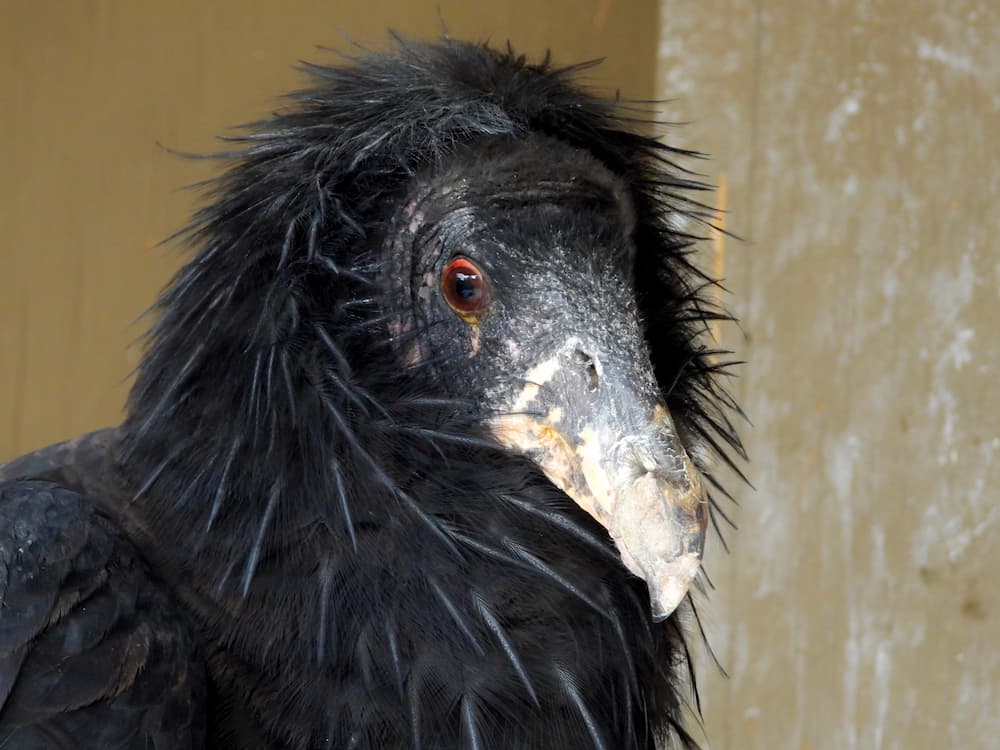Summary of Zoo Successfully Implements Avian Flu Vaccines in C.A. Condors:
California condors participated in successful vaccine trials against highly pathogenic avian influenza (HPAI) at the L.A. Zoo, San Diego Zoo Wildlife Alliance, Oregon Zoo, and Carolina Raptor Center. The trial showed that 60% of the condors developed measurable antibodies that could provide partial protection against HPAI. HPAI was detected in wild condors in Arizona, leading to concerns about the disease undoing decades of conservation work. The vaccine is now being administered to pre-release birds with the hope of eventually vaccinating free-flying birds. The collaboration between zoos has been crucial to the success of the program. The trial first started with black vultures to confirm the vaccine’s safety before proceeding with condors. Overall, 25 condors participated in the trial, and pre-release birds are receiving two doses of the vaccine.
Summary:
– The L.A. Zoo, in collaboration with other organizations, has successfully implemented a vaccine trial for California condors to protect against highly pathogenic avian influenza (HPAI).
– The trial showed that 60 percent of the condors produced antibodies to provide partial protection against HPAI.
– HPAI poses a significant threat to the critically endangered California condor population.
– The vaccine is being administered to pre-release birds as part of the conservation effort.
– The work of zoos has been fundamental in ensuring the success of the vaccine trial.
California condors, one of the most critically endangered bird species, have achieved a significant milestone in their conservation efforts. This summer and fall, the Los Angeles Zoo, in collaboration with other leading organizations, conducted a historic vaccine trial to protect these birds from highly pathogenic avian influenza (HPAI). The results of the trial have been promising and offer hope for the recovery of the condor population.
The vaccine trial was developed in coordination with the U.S. Fish & Wildlife Service, USDA, and U.S. Geological Service, involving the participation of the L.A. Zoo, San Diego Zoo Wildlife Alliance, Oregon Zoo, and Carolina Raptor Center. The initial test group showcased remarkable results, with 60 percent of the condors developing measurable antibodies that can offer partial protection against mortality from HPAI if exposed to the virus.
Over 30 years ago, the L.A. Zoo joined forces with the U.S. Fish and Wildlife Service and its partners to save and protect the critically endangered California condors. At that time, the population of these birds was on the brink of extinction, with only about 20 individuals remaining. Thanks to dedicated conservation efforts, the population has now increased to over 500. However, the recent emergence of highly pathogenic avian influenza posed a new existential threat to these birds.
HPAI has been a significant concern for wild bird species in the United States, particularly during the spring season. To protect all the birds in their care, the L.A. Zoo took several preventive measures, including closing the Aviary, implementing foot-washing procedures for keepers and staff, and removing wild bird feeders throughout the Zoo. These actions aimed to minimize the potential contact between the condors and carriers of the virus.
Unfortunately, in early April 2023, HPAI was detected in wild condors in Arizona, leading to the death of 21 birds in a matter of weeks. This rapid spread of the virus posed a dire threat to the species, which currently has just over 300 individuals in the wild. If left unchecked, HPAI could undo decades of conservation work in the blink of an eye.
With the urgency to address this challenge, the USDA approved the emergency use of a vaccine against HPAI in May. The goal was to pilot the vaccine among the critically endangered California condors in managed care, with the hope of extending its benefits to free-flying condors. The pilot trials proved successful, providing evidence that the vaccine could be effective in protecting the birds. While final results are yet to be obtained, the U.S. Fish and Wildlife Service is now considering vaccinating free-flying birds based on the preliminary findings.
The successful implementation of the vaccine trial would not have been possible without the crucial contribution of zoos. The involvement of high-caliber professionals from various zoological organizations played a vital role in evaluating the vaccine’s potential to minimize the impact of HPAI on condor recovery efforts. The collaborative efforts between these organizations and the California Condor Recovery Program have been instrumental in conducting the trial.
The first step in the vaccine trial involved testing the vaccine’s safety in a surrogate species, black vultures, at the Carolina Raptor Center in North Carolina. This essential phase confirmed that the vaccine was safe for vulture species and paved the way for its administration to condors.
Out of the total condors participating in the trial, which were spread across the three zoos, twenty-five were selected based on factors such as age, gender, genetics, and whether they were raising young. The birds received either two doses or a single dose of the vaccine, and some served as the control group. The results gathered using an antibody detection test have guided the administration of two doses of the vaccine to pre-release condors, preparing them for eventual release into the wild.
The implementation of this groundbreaking vaccine trial signifies a significant achievement in the ongoing conservation efforts for California condors. By protecting these birds against highly pathogenic avian influenza, zoos are playing a critical role in safeguarding the future of this critically endangered species. The collaboration between zoological organizations and conservation programs highlights the importance of teamwork and collective efforts in wildlife preservation.
For those interested in learning more about the vaccine trial, its next steps, and the impact of HPAI on the Southwest flock, the U.S. Fish and Wildlife Service provides regular updates on its dedicated HPAI page. Stay informed and join in celebrating this important milestone for California condors and their journey toward recovery.

